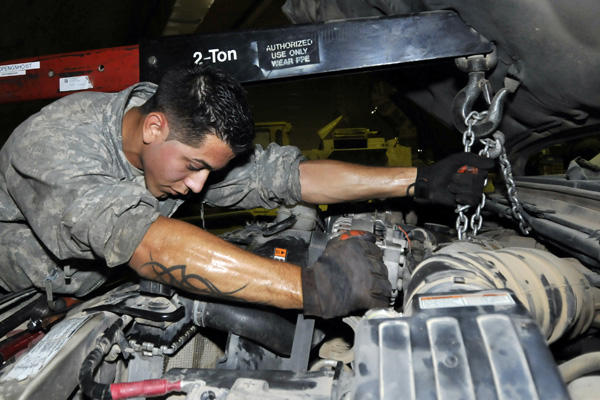The Water Pump
The water pump draws the cooled liquid from the radiator through the bottom radiator hose and sends it to the engine, where it circulates through water jackets located around the combustion chambers in the cylinders and other hot spots. Then the liquid returns to the radiator to cool off again. An accessory belt connected to the crankshaft drives some water pumps, while some overhead cam engines drive the water pump with the timing belt.

Tip: If the timing belt drives your water pump, the water pump will be difficult to see unless you remove the plastic timing belt cover.
The Thermostat
The thermostat is the only part of the cooling system that does not cool things off. Instead, it helps the liquid in the cooling system warm up the engine quickly.

Tip: The thermostat is a small, metal, heat-sensitive valve (see Figure 11-4) that’s usually located where the upper radiator hose meets the top of the engine. (On a few vehicles, you find the thermostat where the bottom hose joins the engine. Your owner’s manual should tell you where yours is.) When it senses hot liquid, the thermostat allows the liquid to pass through. But when the thermostat senses that the liquid is cold (like when you first start your engine in the morning), it closes and doesn’t allow the liquid to circulate through the radiator. As a result, the liquid stays in the engine, where it gets hot as the engine warms up, and in turn, the increasing heat of the liquid helps the engine to warm up more quickly. As a result, the vehicle runs more efficiently and burns less fuel.
From Auto Repair for Dummies, copyright © 2009 by Wiley Publishing, Inc., Indianapolis, Indiana. Used by arrangement with John Wiley & Sons, Inc.










